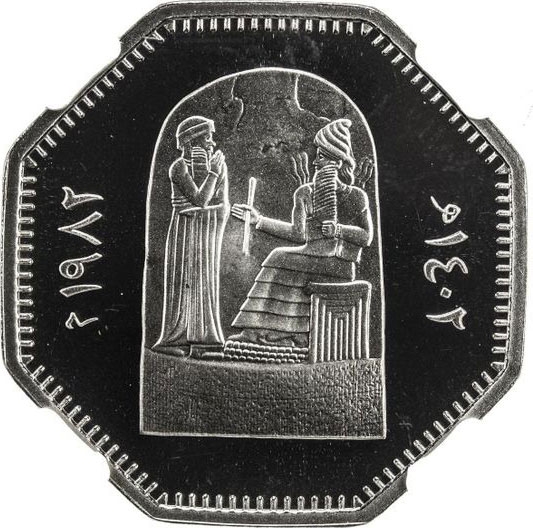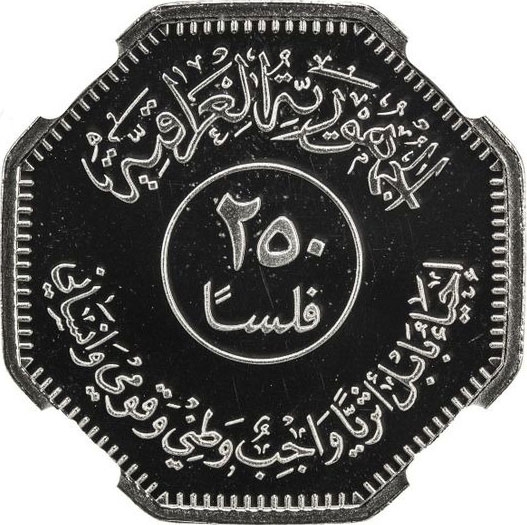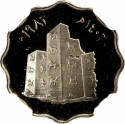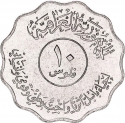You are about to finish your registration. Please check your mailbox (including spam folder). There should be a letter with a confirmation link. Check setting to make sure that your e-mail address is correct.
Send letter againDescription
On 14 February 1978, the Ba'athist government of Iraq under Saddam Hussein began the "Archaeological Restoration of Babylon Project": reconstructing features of the ancient city atop its ruins. These features included the Southern Palace of Nebuchadnezzar, with 250 rooms, five courtyards, and a 30-meter entrance arch. The project also reinforced the Processional Way, the Lion of Babylon, and an amphitheatre constructed in the city's Hellenistic era. In 1982, the government minted a set of seven coins displaying iconic features of Babylon.
Obverse

|
Depicted the upper part of the stele of the Code of Hammurabi dividing dates in Western and in Arabic years both in Arabic numerals. ١٤٠٢هـ ١٩٨٢م |
|---|---|
Reverse

|
Value in Arabic in a central circle with lettering, the country name above. The inscription "The restoration of Babel, a public and national responsibility" below. الجمهورية العراقية |
| Edge |
250 Fils
Restoration of Babel
Code of Hammurabi
Subscribe series
KM# 163 Schön# 70
Restoration of Babel
Code of Hammurabi
Characteristics
| Type | Commemorative Issue (Circulating) |
| Material | Cupronickel |
| Weight | 10 g |
| Diameter | 30 mm |
| Thickness | - |
| Shape |
|
| Sides | 8 |
| Alignment | Medal |
| Alt # |
|
| Mint |
Royal Mint
|







